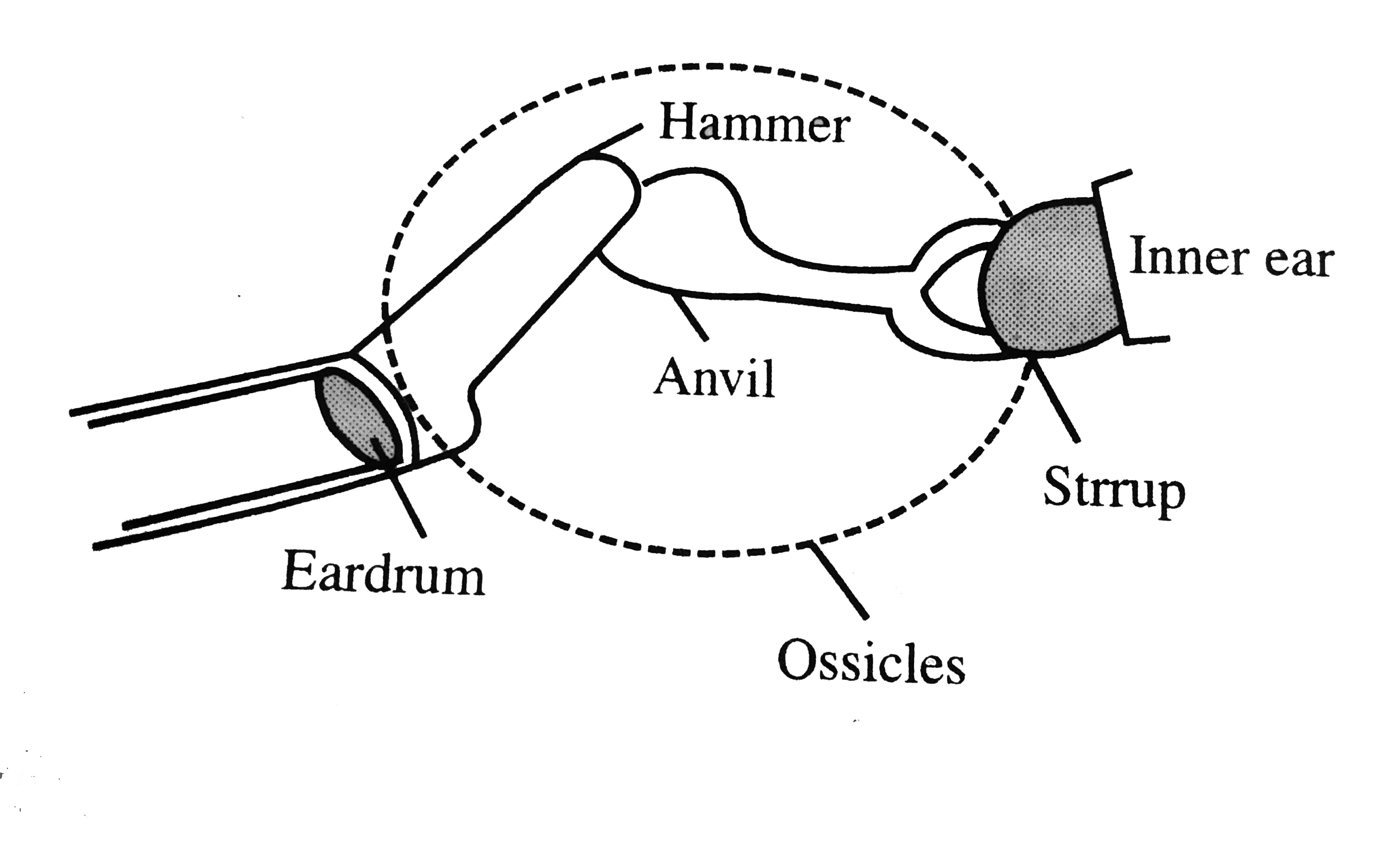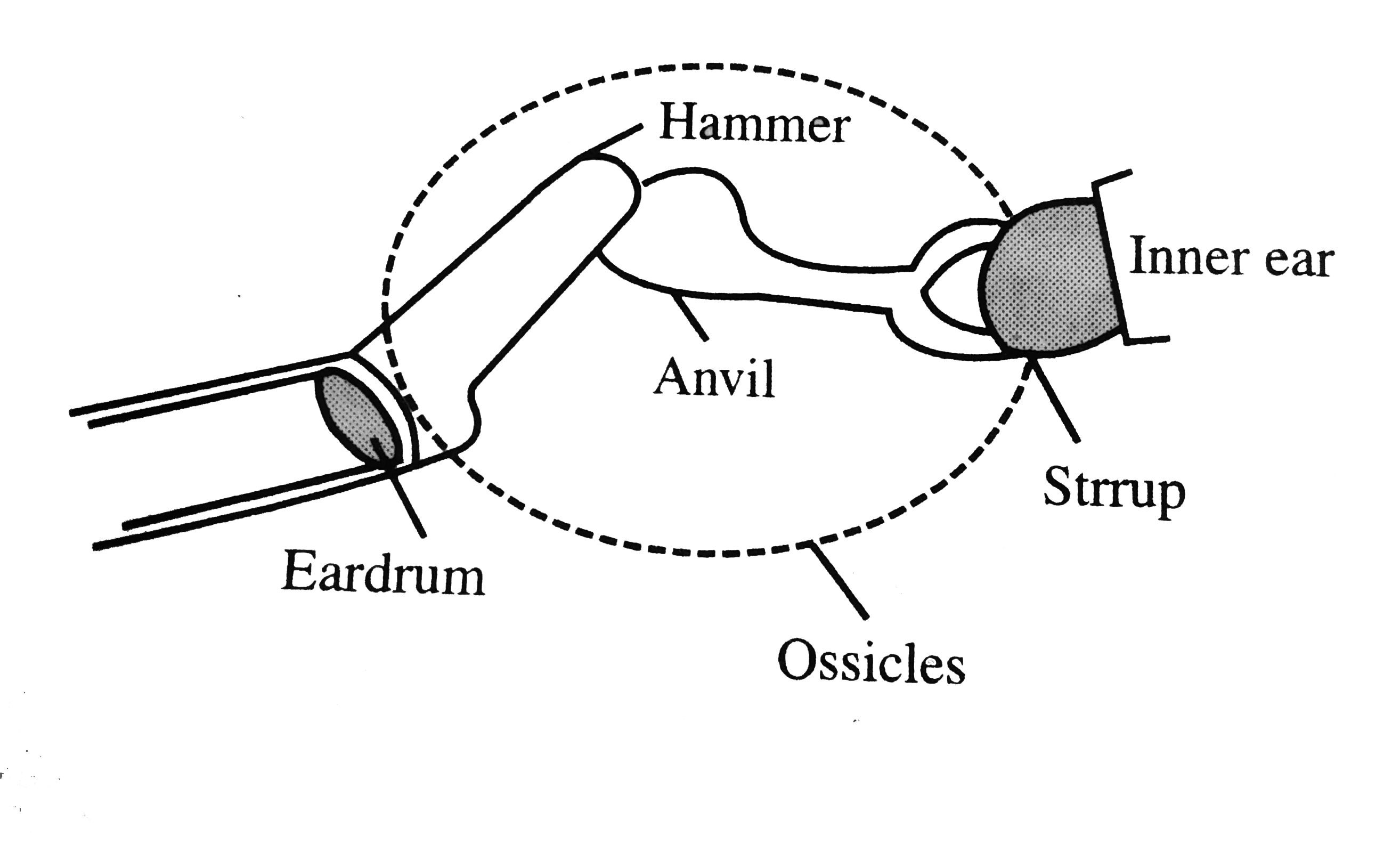____________is hammer shaped while ___________is stirrup like bone in middle ear.
The correct Answer is:malleus ; stapes
To answer the question, we need to identify the bones in the middle ear that correspond to the descriptions provided.
1. Identify the bones in the middle ear: The middle ear contains three small bones known as the ossicles. These bones are the malleus, incus, and stapes.
2. Determine the shape of each bone:
- The malleus is known as the hammer-shaped bone.
- The stapes is known as the stirrup-shaped bone.
3. Fill in the blanks: Based on the shapes identified:
- The first blank (hammer-shaped) will be filled with malleus.
- The second blank (stirrup-like) will be filled with stapes.
Thus, the final answer is:
Malleus is hammer shaped while Stapes is stirrup-like bone in middle ear.
- The malleus is known as the hammer-shaped bone.
- The stapes is known as the stirrup-shaped bone.
- The first blank (hammer-shaped) will be filled with malleus.
- The second blank (stirrup-like) will be filled with stapes.
Malleus is hammer shaped while Stapes is stirrup-like bone in middle ear.
Topper's Solved these Questions
- BOOK - ICSECHAPTER - NEURAL CONTROL AND COORDINATIONEXERCISE - (Review question) Matching1videos
NEURAL CONTROL AND COORDINATION
- BOOK - ICSECHAPTER - NEURAL CONTROL AND COORDINATIONEXERCISE - (Review question) True of false5videos
NEURAL CONTROL AND COORDINATION
- BOOK - ICSECHAPTER - NEURAL CONTROL AND COORDINATIONEXERCISE - (Review question) long answer20videos
NEURAL CONTROL AND COORDINATION
- BOOK - ICSECHAPTER - NEURAL CONTROL AND CO-ORDINATION EXERCISE - NCERT EXERCISES WITH ANSWER (DIFFERENTIATE BETWEEN)11videos
NEURAL CONTROL AND CO-ORDINATION
- BOOK - ICSECHAPTER - PHOTOMORPHOGENESIS IN PLANTSEXERCISE - REVIEW QUESTIONS (LONG ANSWER TYPE QUESTIONS)6videos
PHOTOMORPHOGENESIS IN PLANTS
Similar Questions
Collective term for the three bones that make up the middle ear
View SolutionWith reference to the human ear, answer the questions that follow :
Name the three small bones present in the middle ear. What is the biological term for them collectively?View SolutionNumber of middle ear bones in mammals is
View SolutionFind out the correct order of number of bones in the parts of skull such as cranial bones, facial bone, hyoid bone and middle ear bonds respectively
View SolutionFrom outer to inner side, the sequence of three bones present in the middle ear of mammals is
View Solution
When a sound wave enters the ear, it sets the eardrum into oscillation, which in turn causes oscillation of 3 tiny bones in the middle ear called ossicles. This oscillation is finally transmitted to the fluid filled in inner portion of the ear termed as inner ear, the motion of the fluid disturbs hair cells within the inner ear which transmit nerve impulses to the brain with the information that a sound is present. The theree bones present in the middle ear are named as hammer, anvil and stirrup. Out of these the stirrup is the smallest one and this only connects the middle ear to inner ear as shown in the figure below. The area of stirrup and its extent of connection with the inner ear limits the sensitivity of the human ear consider a person's ear whose moving part of the eardrum has an area of about 50mm2 and the area of stirrup is about 5mm2. The mass of ossicles is negligible. As a result, force exerted by sound wave in air on eardum and ossicles is same as the force exerted by ossicles on the inner ear. Consider a sound wave having maximum pressure fluctuation of 4×10−2Pa from its normal equilibrium pressure value which is equal to 105Pa. Frequency of sound wave in air is 332ms. Velocity of sound wave in fluid (present in inner ear) is 1500ms. Bulk modulus of air is 1.42×105Pa. Bulk modulus of fluid is 2.18×109Pa.
Q. If the person is using an hearing aid, which increase the sound intensity level by 30 dB, then by what factor the intensity of given sound wave change as perceived by inner ear?View Solution
When a sound wave enters the ear, it sets the eardrum into oscillation, which in turn causes oscillation of 3 tiny bones in the middle ear called ossicles. This oscillation is finally transmitted to the fluid filled in inner portion of the ear termed as inner ear, the motion of the fluid disturbs hair cells within the inner ear which transmit nerve impulses to the brain with the information that a sound is present. The theree bones present in the middle ear are named as hammer, anvil and stirrup. Out of these the stirrup is the smallest one and this only connects the middle ear to inner ear as shown in the figure below. The area of stirrup and its extent of connection with the inner ear limits the sensitivity of the human ear consider a person's ear whose moving part of the eardrum has an area of about 50mm2 and the area of stirrup is about 5mm2. The mass of ossicles is negligible. As a result, force exerted by sound wave in air on eardum and ossicles is same as the force exerted by ossicles on the inner ear. Consider a sound wave having maximum pressure fluctuation of 4×10−2Pa from its normal equilibrium pressure value which is equal to 105Pa. Frequency of sound wave in air is 332ms. Velocity of sound wave in fluid (present in inner ear) is 1500ms. Bulk modulus of air is 1.42×105Pa. Bulk modulus of fluid is 2.18×109Pa.
Q. This person (without hearing aid machine) is sitting inside a busy restaurant where average sound intensity is 3.2×10−5Wm2. How much energy in the form of sound is taken up by the person in his meal time of 1 h?View Solution[A] : Tympanic membrane stretching across the aperture between skull bones or within an external meatus.
[B]: This vibrates periodically and transmit- ting external air pressure changes to ear os- sicles of middle ear.View SolutionThe three tiny bones present in middle ear are called ear ossicles. Write them in correct sequence beginning from ear drum.
View SolutionThe three tiny bones present in middle ear are called ear ossicles. Write them in correct sequence beginning from ear drum.
View Solution

